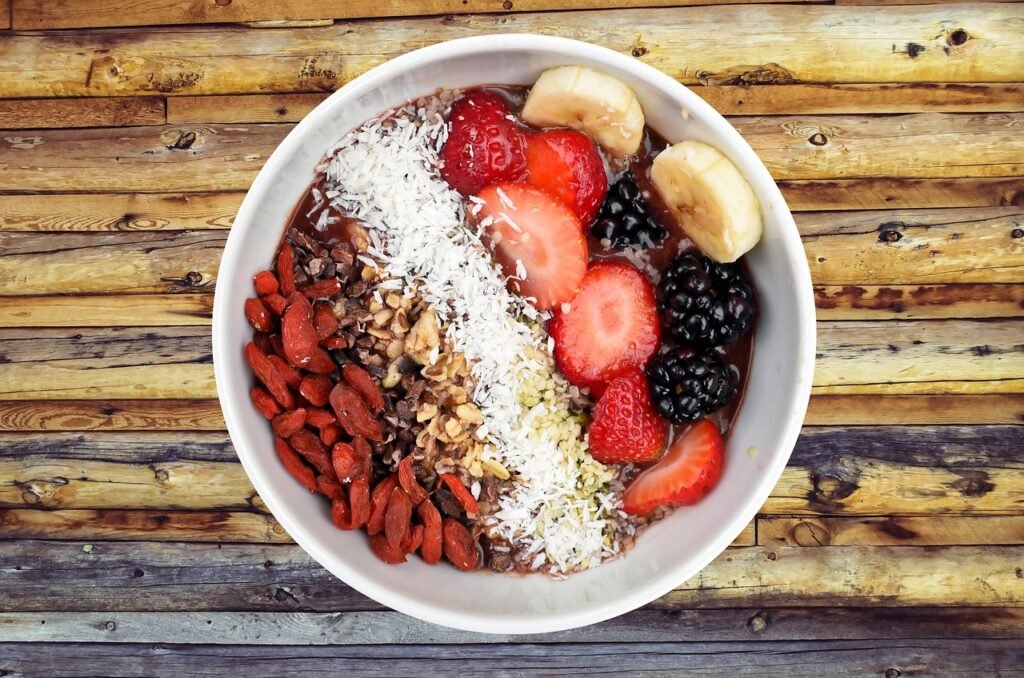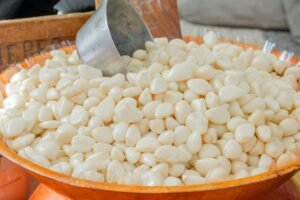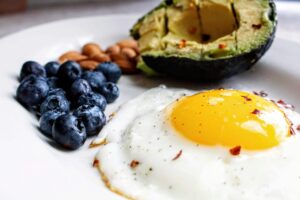Introduction
A balanced diet filled with nutrient-rich, high fiber foods is essential to health, especially when it comes to weight loss. Among these, certain non-digestible carbohydrates are key players, known for their roles in digestion, fat burning, and satiety. If you’re seeking a sustainable and natural approach to losing weight, incorporating more of these foods into your diet can offer profound benefits. This guide dives into the science behind these foods, their health advantages, and how they can help you reach your weight goals.
Exploring the Different Types of Dietary Carbohydrates
Dietary carbohydrates consist of both digestible and non-digestible types. While most carbs break down into sugar for energy, certain forms pass undigested through the body, bringing unique health benefits along the way. These carbs are categorized into two main types, each playing a distinct role in digestion, blood sugar stabilization, and weight management.
- Soluble Types: This form dissolves in water, forming a gel-like consistency in the stomach and digestive tract, slowing down nutrient absorption. This process helps stabilize blood sugar and reduce cholesterol levels, making it ideal for weight control. Foods like oats, legumes, apples, and citrus fruits are rich sources of these slow-digesting carbs.
- Insoluble Types: Unlike soluble forms, these carbs do not dissolve in water, adding bulk to stool and promoting regular bowel movements. Whole grains, nuts, seeds, and many vegetables are full of this form, which helps prevent constipation and promotes a healthy digestive system.
Including both types in your diet builds a supportive foundation for better digestion, balanced energy levels, and satiety, all of which aid in achieving weight management goals.
How High-Fiber Foods Contribute to Weight Loss

High-fiber foods are especially helpful for weight loss because they create a sense of fullness that reduces food intake. Here’s a closer look at how these foods work to help manage weight:
- Promotes Satiety: Undigestible carbs expand in the stomach, triggering hormones that signal fullness. This leads to lower calorie intake, making it easier to achieve a calorie deficit, which is essential for weight loss.
- Stabilizes Blood Sugar Levels: Soluble sources slow down the absorption of sugars, preventing blood sugar spikes and crashes. This effect is crucial for hunger control, helping to curb cravings for high-calorie or sugary foods.
- Aids Digestion and Prevents Bloating: By supporting regular bowel movements, high-fiber foods reduce bloating and can help flatten the stomach. An efficient digestive system is vital for nutrient absorption and managing energy levels throughout the day.
- Reduces Caloric Density of Meals: Foods rich in these carbohydrates are often lower in calories while taking up more space in the stomach, helping you feel full on fewer calories. This effect supports a reduction in total caloric intake without causing feelings of deprivation.
- Supports Gut Health: Certain undigestible carbs feed beneficial bacteria in the gut, acting as prebiotics. A healthy gut microbiome is associated with reduced inflammation, improved metabolic health, and weight control.

The Link Between Gut Health and Weight Loss
A well-balanced gut microbiome impacts numerous aspects of health, including body weight. High-fiberfoods feed beneficial bacteria, encouraging the production of short-chain fatty acids (SCFAs) like butyrate. SCFAs have anti-inflammatory properties and can positively influence hunger hormones, making it easier to manage food intake. A healthy gut not only aids digestion but also improves immune function, reduces cravings, and promotes weight management.
Best High-Fiber Foods to Include in Your Diet
To leverage the benefits of these foods, aim to incorporate a variety of sources throughout your day:
- Oats: High in soluble carbs, particularly beta-glucan, which supports cholesterol reduction and satiety. A bowl of oatmeal with fruits and nuts makes a nutritious breakfast option.
- Legumes: Beans, lentils, and chickpeas contain both soluble and insoluble types, providing a hearty and nutrient-dense addition to soups, salads, or stews.
- Fruits: Berries, apples, pears, and citrus fruits are high in these carbs and relatively low in calories, making them ideal snacks or smoothie ingredients.
- Vegetables: Broccoli, Brussels sprouts, carrots, and sweet potatoes contain beneficial carbs, enhancing your meals with both color and nutrients.
- Whole Grains: Brown rice, quinoa, barley, and whole wheat bread contain more nutrients than refined grains, helping you stay full and energized.
- Nuts and Seeds: Almonds, flaxseeds, chia seeds, and pumpkin seeds offer undigestible carbs and healthy fats, adding crunch to yogurt, oatmeal, or salads.
Meal Plan for High-FiberFoods
Incorporating these foods doesn’t have to be complicated. Here’s a sample meal plan that emphasizes high-fiber ingredients for balanced nutrition:
- Breakfast: Oatmeal with berries, chia seeds, and almond milk.
- Lunch: Quinoa and chickpea salad with mixed greens, cucumber, cherry tomatoes, and a drizzle of olive oil and lemon juice.
- Dinner: Grilled salmon or tofu with a side of roasted Brussels sprouts, carrots, and a portion of brown rice.
- Snacks: Apple slices with almond butter, and a handful of mixed nuts.
This plan offers a good balance of soluble and insoluble carbs, helping keep you full and energized throughout the day.
Tips for Increasing Intake of High-Fiber Carbohydrates
If you’re not used to a high intake of these foods, here’s how to start gradually:
- Start Slowly: Increase your intake over a few weeks to help your digestive system adjust.
- Stay Hydrated: Drink plenty of water to aid the passage of these carbs through your digestive system.
- Focus on Whole Foods: Rely on natural sources such as fruits, vegetables, and legumes, which also provide additional nutrients.
- Incorporate High-Fiber Foods into Every Meal: Add veggies to your omelet, beans to your salads, or snack on an apple with nut butter.
Common Myths and Misconceptions
There are several misconceptions surrounding high-fiber foods. Some people think that these foods are only good for digestion, but they also help stabilize blood sugar and promote satiety. Others assume that only plant-based diets can provide enough high-fiber carbs; however, including whole grains and legumes in any diet can help you meet your needs. Understanding these myths can make it easier to incorporate more of these foods without confusion or hesitation.
When to Consider Supplements and What to Watch For
Whole foods should always be the priority, but fiber supplements like psyllium husk or inulin can be helpful if meeting daily goals is challenging. Supplements are generally safe but should be introduced gradually to avoid digestive discomfort. Additionally, it’s best to choose supplements without added sugars or artificial ingredients to maximize health benefits.
The Importance of Hydration with High-Fiber Foods
Staying hydrated is crucial when increasing your intake of these foods, as they absorb water and help prevent constipation. Dehydration can make digestion difficult, so aim for at least 8 glasses of water per day. Adding lemon or a splash of juice can also make drinking water more enjoyable if plain water doesn’t appeal to you.
Lifestyle Tips for Maintaining a High-Fiber Diet
Including high-bulk foods in your daily life doesn’t need to be complicated. Here are some practical tips:
- Prep Meals in Advance: Chop vegetables, cook grains, and prepare beans ahead of time to make it easier to incorporate high-bulk foods into each meal.
- Mix It Up: Variety is key. Rotate different types of fruits, vegetables, legumes, and whole grains to keep meals interesting and nutritionally balanced.
- Snack Smartly: Choose snacks that offer both satiety and nutrition, such as apple slices with almond butter or carrots with hummus.
- Stay Consistent: Building consistency with high-fiber foods in each meal will help you maintain the benefits for digestion, satiety, and weight management over time.

Overcoming Potential Pitfalls with High-Fiber Foods
A high intake of bulk-forming foods can cause discomfort, especially if the body is not used to it. Common issues include bloating, gas, or even constipation when the diet is increased too quickly or without adequate water intake. Overcoming these pitfalls is simple if you increase intake gradually, drink plenty of fluids, and prioritize whole foods. In the long term, your body will adjust, and you’ll enjoy the benefits without discomfort.
Long-Term Benefits Beyond Weight Loss
While weight management is one primary benefit, high-bulk foods also contribute to a range of health improvements. Regular consumption is associated with lower cholesterol, reduced risk of heart disease, and better blood sugar control. Additionally, a high intake supports immune function by promoting a healthy gut microbiome, which influences the body’s ability to fight infection and reduce inflammation.
The Role of High-Bulk Foods in Reducing Inflammation
Chronic inflammation is linked to various health issues, from obesity to cardiovascular disease. High-bulk foods support the production of SCFAs in the gut, which have anti-inflammatory properties and help reduce markers of inflammation. Maintaining a diet high in these foods can help lower systemic inflammation, making it a valuable addition to a heart-healthy, anti-inflammatory diet.
Conclusion
Incorporating more high-bulk foods into your diet is a powerful tool for weight loss and overall health. These foods offer numerous benefits, from supporting digestion to promoting fullness, stabilizing blood sugar, and fostering a healthy gut. Making high-bulk foods a regular part of your meals helps you control appetite, maintain energy, and support a healthier, balanced lifestyle. With consistent habits and a variety of these nutrient-dense options, you’re well on your way to a healthier, more satisfying approach to weight management. If you want to learn more about fat burning and muscle building, check out some of our other articles on how to build muscles!
External Link: Discover the benefits of high fiber foods for weight loss on WebMD – High-Fiber Diets and Weight Loss.
Disclaimer:
The content provided here is for informational purposes only. This blog is not intended to substitute for medical advice, diagnosis, or treatment. Always seek the advice of a qualified healthcare provider for any questions or concerns you may have regarding a medical condition. Reliance does not endorse or recommend any specific tests, physicians, procedures, opinions, or other information mentioned on the blog.




